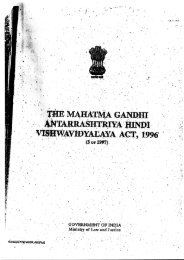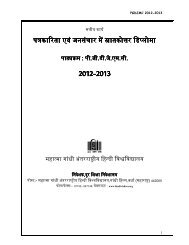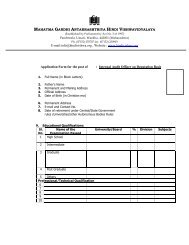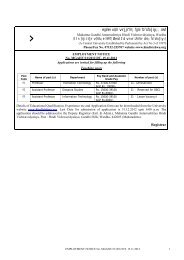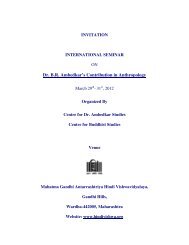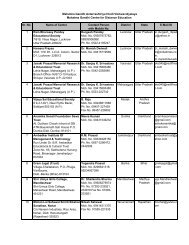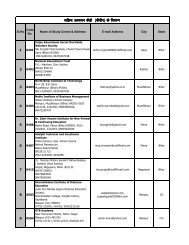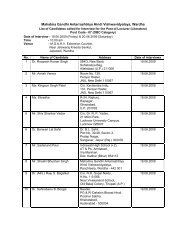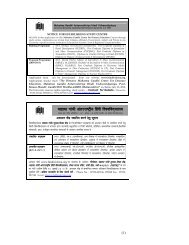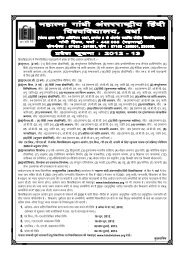Mamta Kalia
Mamta Kalia
Mamta Kalia
Create successful ePaper yourself
Turn your PDF publications into a flip-book with our unique Google optimized e-Paper software.
examinations, results of examinations,<br />
prize distribution, certificate distribution,<br />
and so on.<br />
Along with this, under the<br />
presidentship and direction of Shri<br />
Narayan Mathura, there is an organization<br />
called “Hindi Parishad, Netherlands”,<br />
which organizes every year the Prathma,<br />
Madhyama, Uttama, Praveshika and<br />
Acharya exams of Wardha Rashtrabhasha<br />
Parishad. Lovers of Hindi from among<br />
the people of Indian origin hold free<br />
classes for preparing candidates for these<br />
exams at many places. The Arya Samaj<br />
and several other organizations and<br />
institutions of Sanatan Dharma play active<br />
roles in the promotion of Hindi language.<br />
Among people doing such work, Surya<br />
Prasad Bire’s name is prominent – he<br />
has been engaged heart and soul in the<br />
work of promoting Hindi language and<br />
Indian culture. He has made notable<br />
contributions to promoting Hindi through<br />
a weekly one-hour TV programme and<br />
through the cooperation of other<br />
organizations. Apart from being the priest<br />
in-charge of Arya Samaj, he also has<br />
an excellent knowledge of Sanskrit and<br />
Hindi languages.<br />
Eleven thousand four hundred and<br />
two certificates have been distributed<br />
so far by Narayan Mathura of Hindi<br />
Parishad, Netherlands. He has been<br />
serving the organization for twenty-five<br />
years [by 2009] and on an average five<br />
hundred students sit for these exams<br />
every year.<br />
146 :: April-June 2010<br />
From around the year 1993, a bilingual<br />
magazine in Dutch and Hindi, called<br />
Vishwa Jyoti, began coming out, which<br />
had material on learning Hindi along<br />
with material helpful on living a life<br />
balancing Indian culture and<br />
multinational culture. This was a cultural<br />
and social magazine in Hindi. In the<br />
80s, a twenty-page magazine called<br />
Sarnami used to be published which used<br />
to highlight Sarnami literature and<br />
promote Sarnami language on the one<br />
side, and on the other, it used to declare<br />
Hindi as the mother [mahtari] language<br />
of Sarnami and give on the cover page<br />
information about devnagari letters.<br />
In this way, Hindi has been available<br />
for reading for a while through magazines<br />
and booklets but essentially the standard<br />
of Hindi here is extremely low. If the<br />
work of teaching and learning Hindi has<br />
been going on, it is because of the amazing<br />
love people have for Indian culture. But<br />
no creative work of literature is visible<br />
in Hindi. One might say, though, that<br />
some meaningful literary work is going<br />
on in Sarnami. But the authors [poets<br />
and writers] of these works consider<br />
themselves Sarnami writers, and as<br />
distinctly separate from Hindi writers.<br />
They are engaged in giving expression<br />
to the life and culture of their ancestors<br />
in Suriname and the cultural struggles<br />
of people of Indian origin in the<br />
Netherlands. These writers have their<br />
own individual groups and their own<br />
strategies to establish themselves among<br />
the people of the Netherlands.




